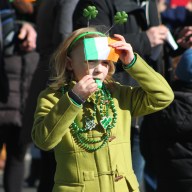By Philip Newman
A mother peregrine falcon has welcomed two Queens falcon chicks to her family atop the Verrazano-Narrows Bridge after a move from what environmentalists said was an unsuitable nesting place on the Throgs Neck Bridge.
“The mother took in the adopted chicks without question and has been feeding them and watching over them along with her own three chicks as if they were always part of her brood,” said Verrazano-Narrows Bridge General Manager Daniel DeCrescenzo. “It’s truly nature at its best.”
Chris Nadareski, a wildlife biologist with the city Department of Environmental Protection, said the relocation was necessary because the chicks would have had trouble safely leaving the nest area while learning to fly.
Nadareski said the chicks were moved to the Verrazano-Narrows Bridge May 28 and a few days later the two male and three female chicks were “one big happy family.”
The chicks all hatched in late April and early May.
Banding takes place several weeks later to allow the chicks’ talons to grow to adult size. Each new chick gets an identification band so it can be tracked as it grows and reproduces.
The city’s peregrine nesting program began in 1983 to help repopulate the peregrine population, which was nearly wiped out in the 1960s as a result of pesticides in their food sources. They are on the state Department of Environmental Conservation’s Endangered Birds list.
Structures that are part of the MTA Bridges and Tunnels Authority are home to 11 new peregrine falcons this year in addition to the Verrazano’s two males and three female chicks. Four females were hatched at the Marine Parkway-Gil Hodges Memorial Bridge and two more — a male and a female — hatched atop a Bronx tower on the Throgs Neck Bridge.
When the program began, only two nests existed throughout New York City: one at the Verrazano-Narrows Bridge and one at the Throgs Neck Bridge. Now, the DEC reports there are 73 pairs of peregrine falcons statewide, including 15 pairs in New York City.
“Without the MTA’s cooperation in providing access to us and maintaining the nesting sites, we wouldn’t have the kind of successful program we do today,” Nadareski said.
Falcons living in urban areas prefer the tops of bridges, church steeples and high-rise buildings, which provide vantage points for hunting their prey, including pigeons and small birds.
The falcons atop the Verrazano-Narrows Bridge have a spectacular view of New York Bay from their perch 693 feet above the water on the Brooklyn tower. On the Throgs Neck, they roost at 360 feet on the Bronx tower and the new falcons at the Marine Parkway-Gil Hodges Bridge nest inside a World War II-era gun turret 215 feet up on the Rockaway side of the span.
Reach contributing writer Philip Newman by e-mail at timesledgernews@cnglocal.com or phone at 718-260-4536.
































